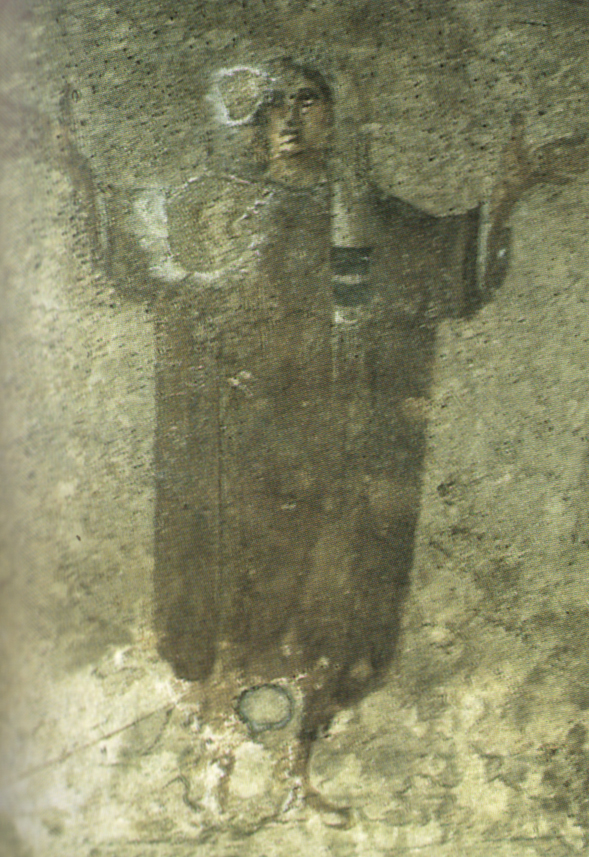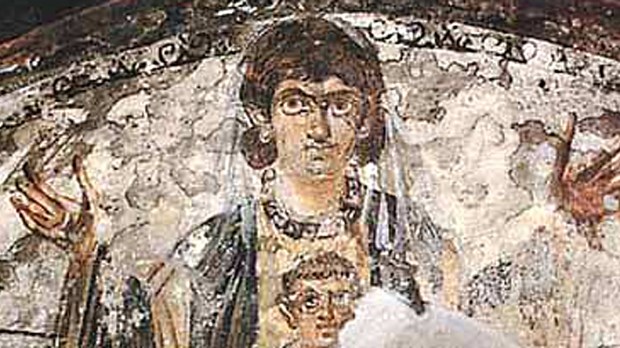When studying early Christian art and iconography, a common posture is found in various representations of Christians or even directly connected to the Blessed Virgin Mary. The figure being depicted often has his or her arms outstretched with palms facing upward.

Why is that? What are they doing?
The posture is often referred to as the orans position, which is Latin for “one who is praying.” This was a common way of praying in the ancient world, not reserved to Christianity. In fact, most pagans prayed in the same way and pagan deities were visually represented standing or sitting in the orans position.
Colin B. Donovan gives an excellent explanation of how this posture became associated with prayer.
Consider what we do when we plead with someone. We might put our arms out in front of us as if reaching for the person and say “I beg you, help me.” This seems to be a natural human gesture coming from deep within us — like kneeling to adore or to express sorrow. Now, turn that reach heavenwards and you have the orans position.
With the advent of Christianity, the orans position received additional symbolism, connecting it to the crucifixion. Therefore when Christians prayed, they were offering up their supplication to God, imitating Jesus’ outstretched arms on the cross.
In addition to this posture of prayer, Christians also prayed while kneeling and laying down on the ground.

Read more:
Photos of this priest’s martyrdom were meant to dissuade Catholics; that’s not what happened

